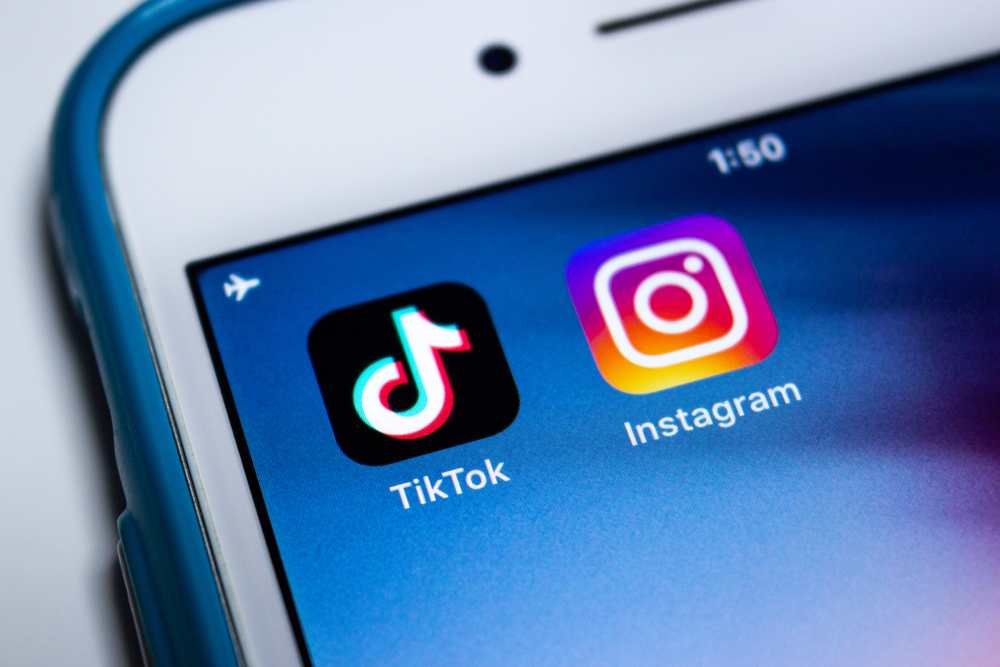
TikTok has made major strides in the social media industry. The App is projected to gain over 2.1 billion users by the end of the year. As such, its rise in prominence hasn’t gone unnoticed by other major industry players, including Instagram.
News of Instagram incorporating TikTok-like features into its platform has become a common norm in recent times. For instance, its addition of features such as Instagram reels and vertical feed for stories makes it more similar to TikTok.
Here is an overview of these two platforms:
So What is Instagram?
Instagram is a Facebook-owned social media platform that was launched on October 6, 2010. Since then, it has gone on to become one of the most popular social media platforms. The app attracts over 1 billion users each month.
Facebook is mobile-friendly and supports both photo and video sharing. Its users can effortlessly take photos, edit them, and post visual content, which their followers can react to through likes, shares, or comments.
In recent times, Instagram has prioritized its video-sharing capabilities. Currently, users have three video sharing features at their disposal – the IGTV, Stories, and Reels. It owes its newfound focus on video sharing partly to TikTok. Instagram’s Reels, in-feed, short-form video content that allows addition of music to it was its counter to TikTok’s growing influence. Moreover, Instagram Stories are Snapchat-like, short-form videos that disappear after 24 hours whereas IGTV is created more like YouTube with long-form content.
Instagram paved the way for the rise of influencer marketing. Several of its users have amassed followers on the platform on spaces like food, lifestyle, and fashion. Nonetheless, the rise of TikTok has resulted in many influencers migrating to it.
What is TikTok?
TikTok, which was formerly known as Musical.ly, is a video streaming and sharing app. At its inception in 2014, it was majorly used to create and share 15-send lip-sync videos. Bytendace acquired Musical.ly in 2017 and later changed its name to TikTok in 2019.
Presently, it is recognized for its short-form, 60-second videos where users can perform comedy skits, dance to music, make commentary videos on various topics, and take part in viral challenges. Today TikTok is one of the most-used apps on the internet with the Gen Zs being its latest fanbase.
The 2020 global pandemic was a blessing in disguise for TikTok. As people were forced to stay indoors due to curfews, most of them opted to use social media platforms to conduct their businesses and socialize. TikTok was one of the major beneficiaries of this change. During the first quarter of 2020, TikTok was downloaded 315 million times across Apple and Android devices. As of January 2021, TikTok had recorded over 2.6 billion downloads across the world.
Key differences between TikTok and Instagram
Music Options and Video Editing Features
Instagram bars users with business profiles from accessing its music feature. Suppose they want to include music in their reels, they either have to record their own audio, use royalty-free music, use someone else’s original video, or pre-produce their reels outside of the app. Tiktok, on the other hand, gives all its users the autonomy to select a wide range of music from its sound library.
When compared to TikTok – which provides numerous effects, templates, and filters for video creation – Instagram has limited effects in its library. Moreover, users can only select them before making a video clip.
Another significant difference between these two apps is that TikTok has duet, stitch, and reaction features, all of which are absent from Instagram’s reels.
The Algorithm
These two platforms have algorithms with different engagement levels. TikTok’s “For You” page is more customized to satisfy users’ needs. It has a vertical full-screen experience that makes users want to use it all the time. On the other hand, Instagram’s “Discover” page is characterized by the amalgamation of content.
Paid Advertising
Instagram is more established in the paid advertisement space than TikTok, given that it entered the market earlier. Even so, TikTok provides its users with a variety of paid advertising options such as branded effects, branded hashtag challenges, in-feed ads, topview, and brand takeovers. Instagram, on the other hand, has been facilitating the creation of branded content for static posts. Sometime in late 2020, it also added branded content tags for reels to its paid advertising options.
Despite Instagram having added some features that make it seem like an alternate version of TikTok, there are still numerous differences that set these apps apart. For example, while TikToks’ distinct content video features may make it more appealing in the ever-changing social media terrain, Instagram holds the upper hand for being owned by one of the tech conglomerates globally. Moreover, as opposed to TikTok, Instagram hasn’t had any scrutiny and political barriers.
At the moment it seems these social media platforms are at a deadlock. As such, only time will tell who comes up on top.
